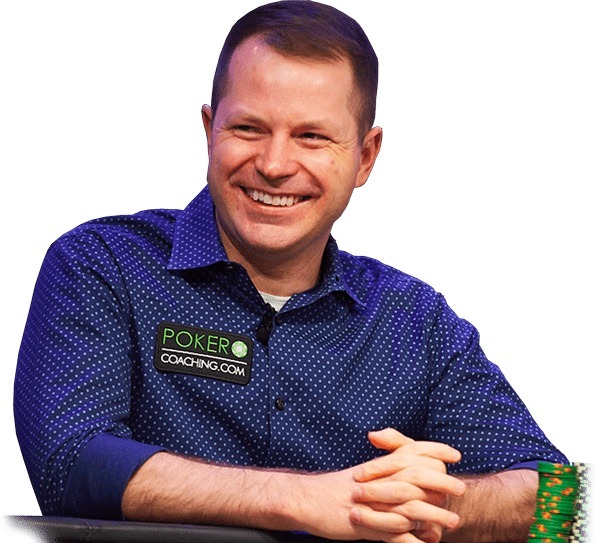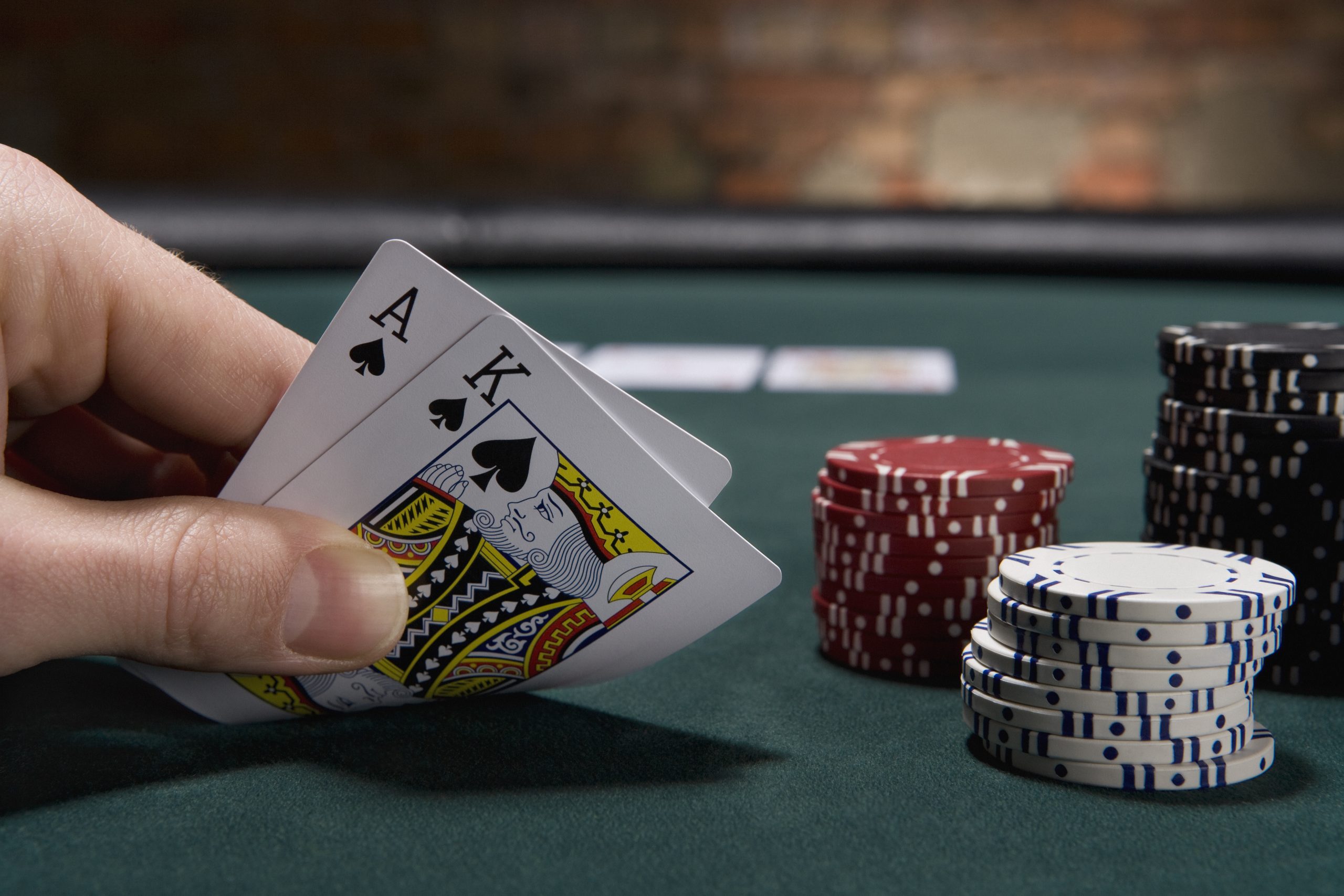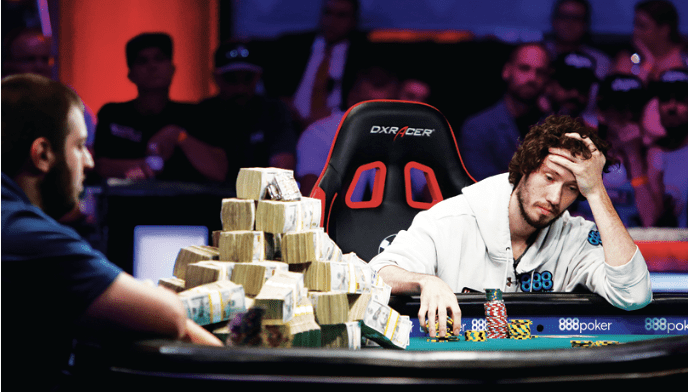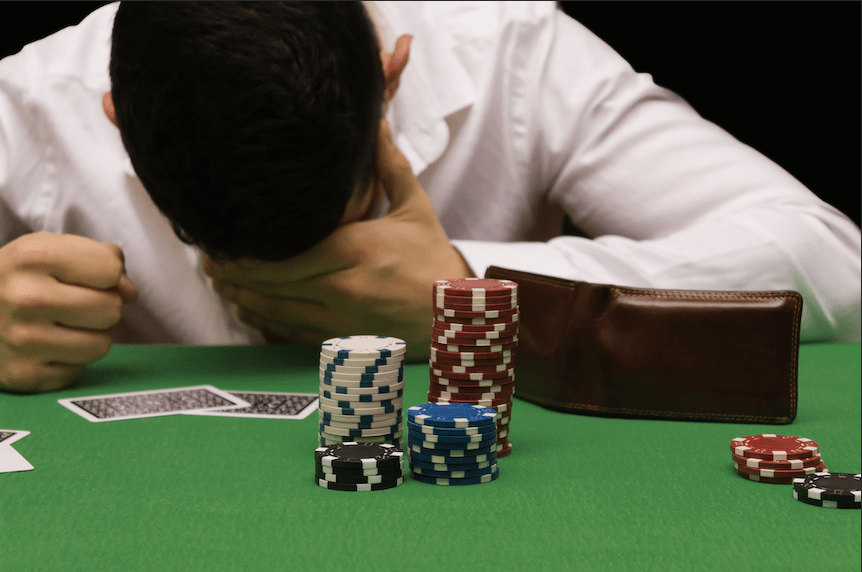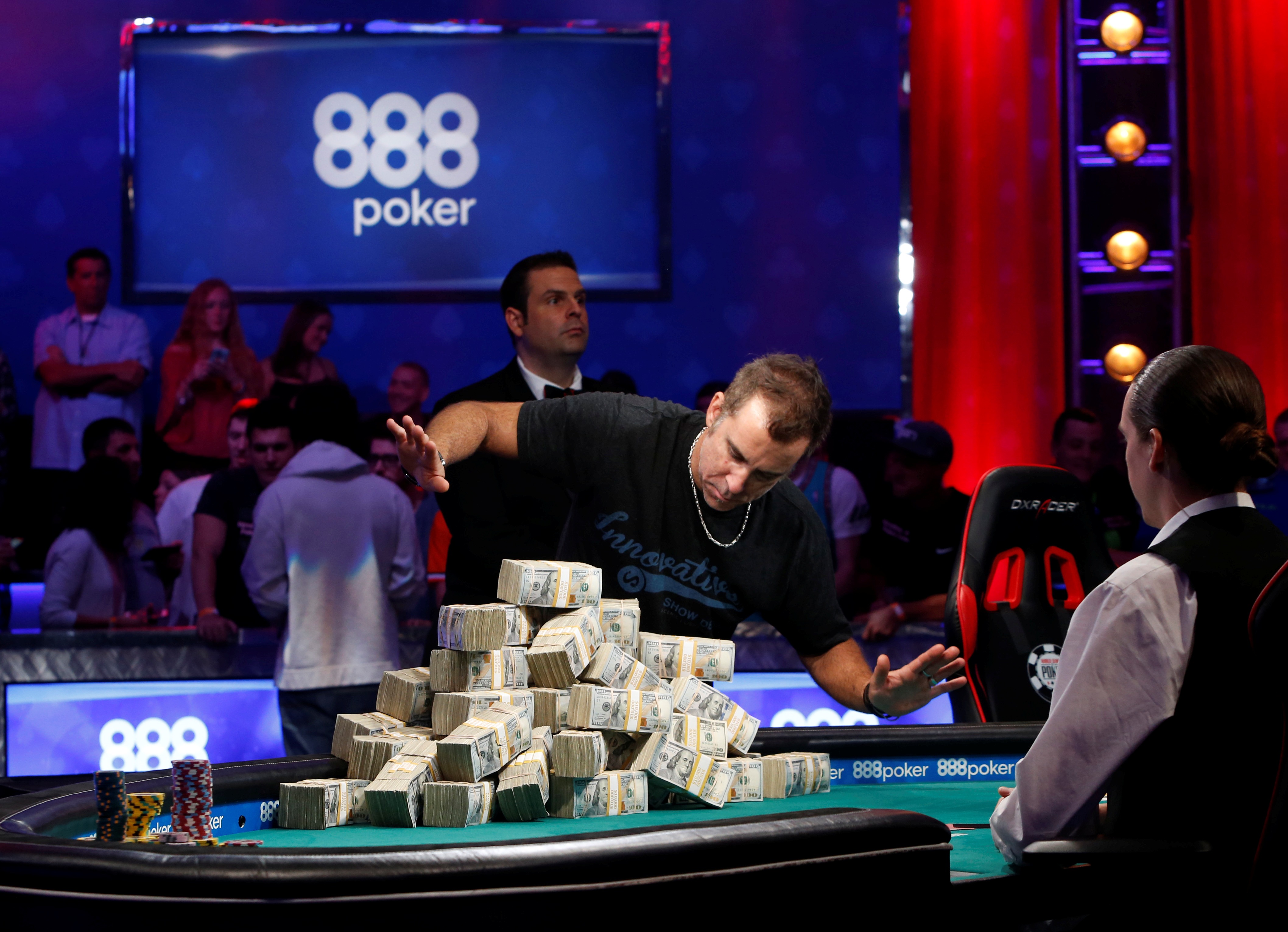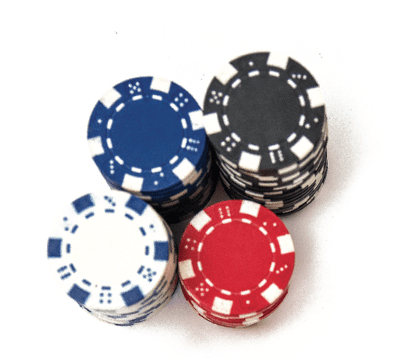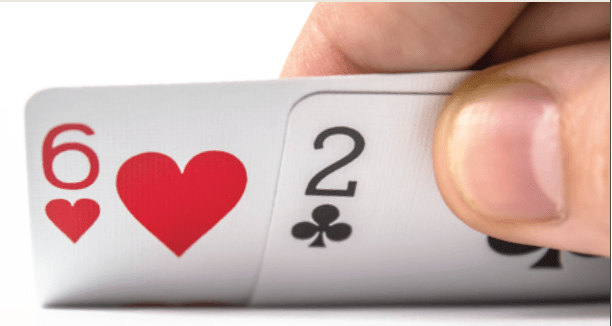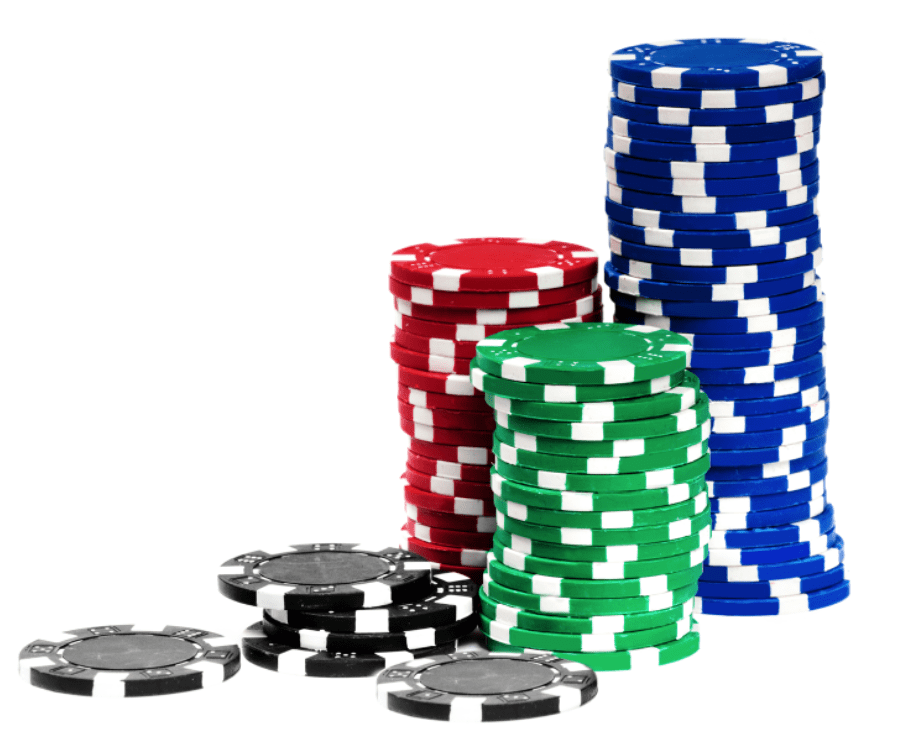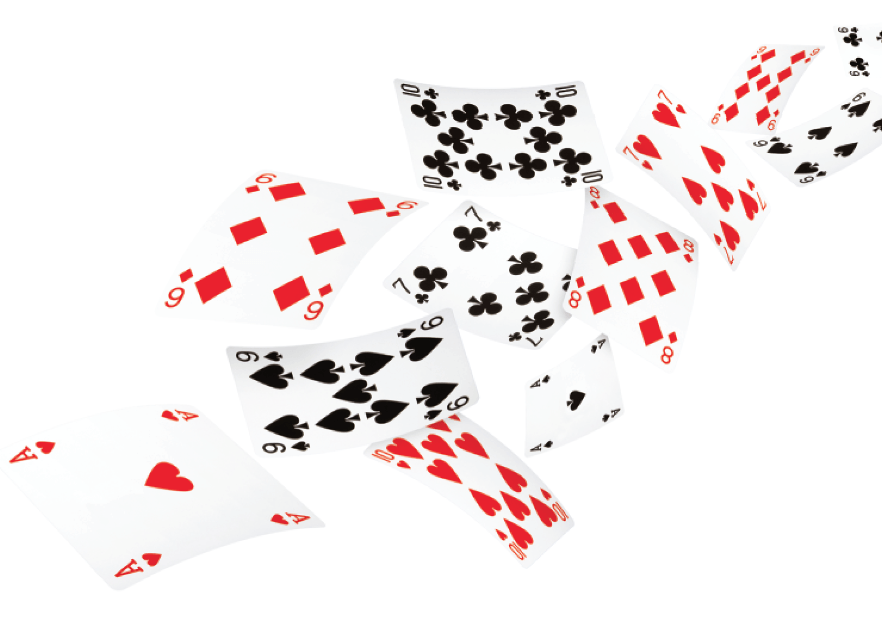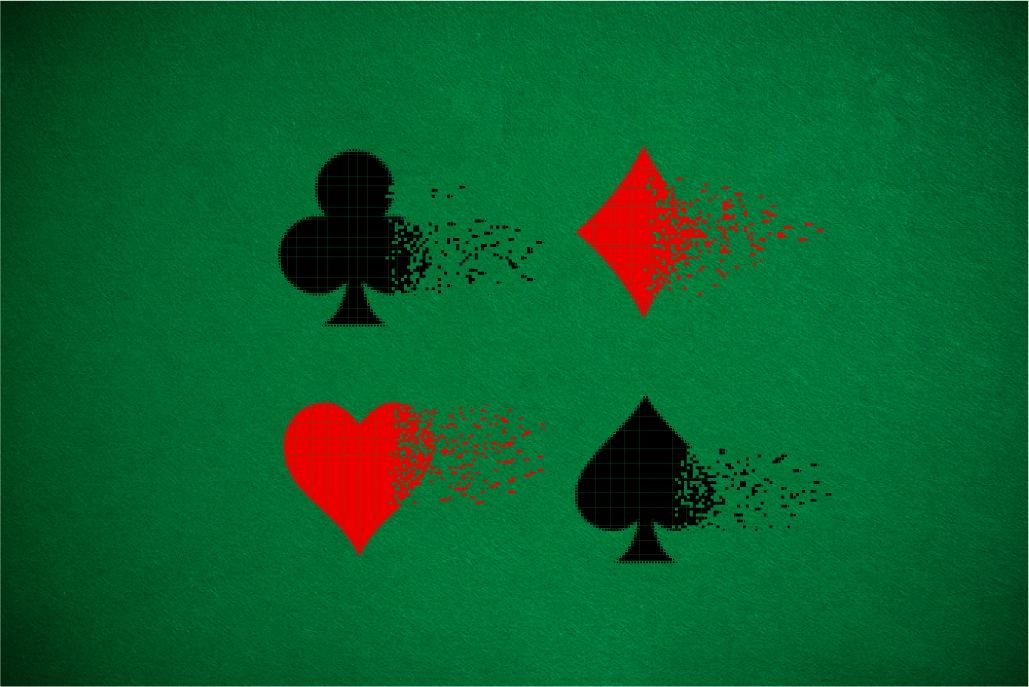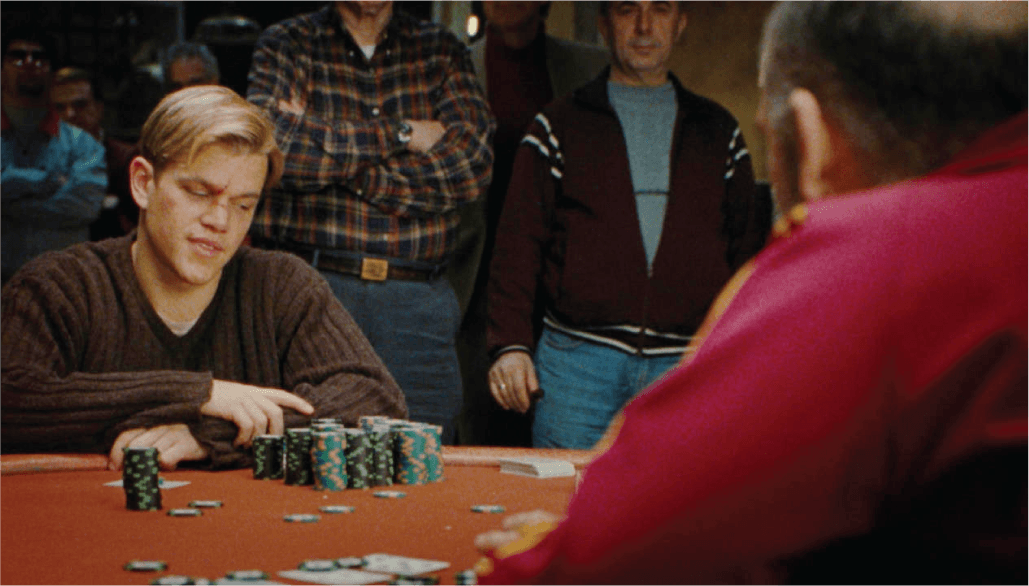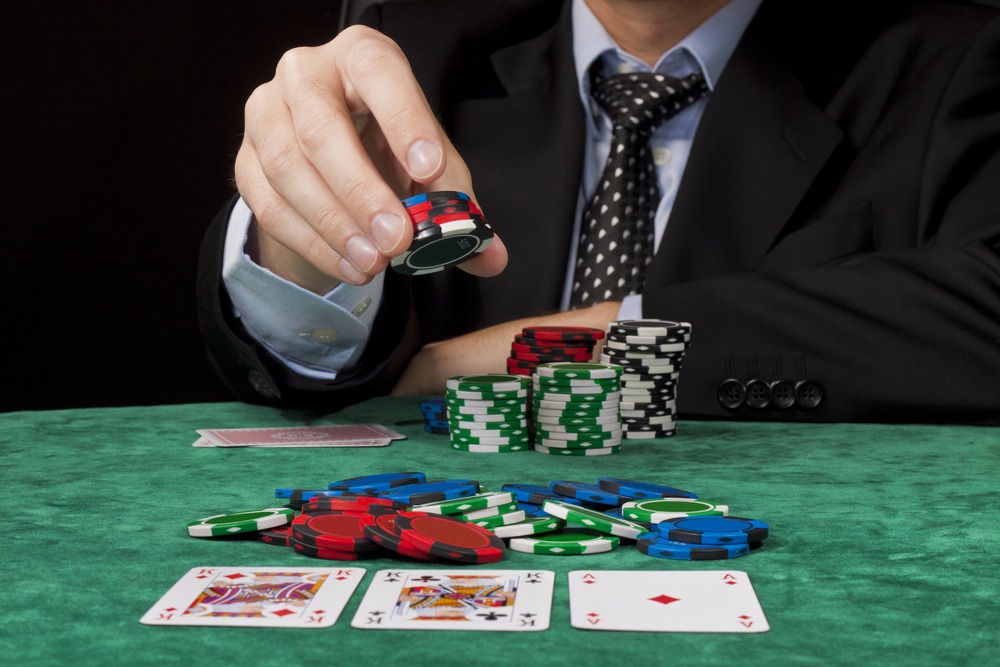Counting Outs
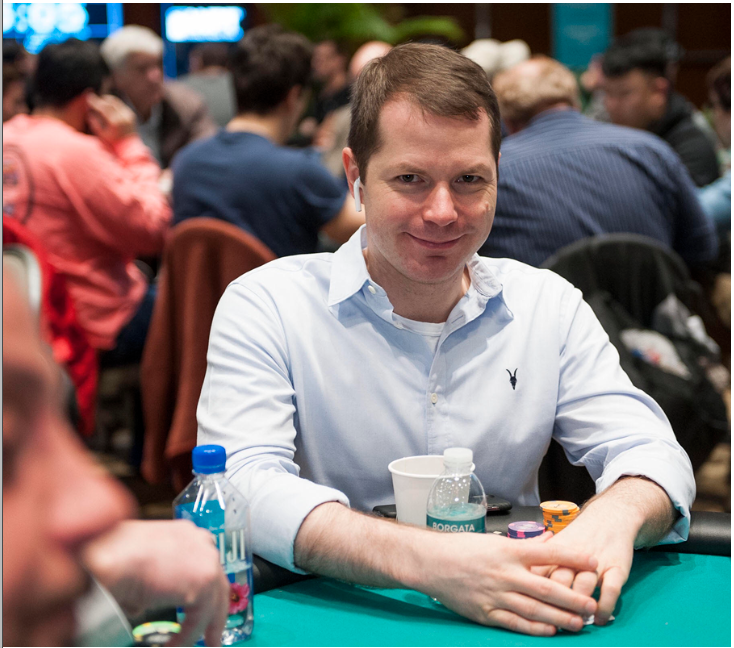
The essential poker skill all players need to know
Poker players often have either a strong made hand or an obvious draw. A draw is a hand that’s almost certainly behind at the moment but could improve and become a hand that can beat all or almost all other hands. For example, when a player has 5-4 on the K-6-3-J turn, if a 7 or 2 comes on the river it’s the best possible hand.
Just because a player has the potential to improve his draw to an effective nut hand doesn’t mean he should continue when facing a bet. Compare the pot odds to the odds one of the cards needed to complete the draw is the next face-up community card.
Suppose a player has a 5-4 and an opponent goes all-in for $100 into a $100 pot on the K-6-3-J turn. Knowing it would probably require improving to a straight to win, the player can figure out if he can profitably make the call. To figure out how often one needs to win to justify calling, divide the amount the player has to call (100 in this case) by the current pot (100) plus the bet he’s facing (100) plus the amount he has to call (100).
Then: 100/(100+100+100) = 33%. So, if the draw will arrive on the river 33% of the time or more, one can profitably call.
Take the next step
Next, figure out how often a 7 or 2 will arrive on the river. Four unseen 7s and four unseen 2s remain in the deck (including the folded and burn cards, because one has no way of knowing which cards are in the deck. Forty-four unseen cards remain in the deck (52-card deck minus the four on the board, minus the two in one’s hand, minus the two cards in the opponent’s hand). Take the number of cards that let one win (8) and divide it by the number of cards remaining in the deck (44) to see how often the draw will complete on the river: 8/44 = 18%.
Use the shortcut
A shortcut to figuring out how often a draw will arrive on the next card is to take the number of outs one has (8) and multiply it by 2. Make that number a percentage, and that is roughly the percentage of time one will improve on the next card. 8 x 2 = 16% (which is close to 18%). Multiply the number of outs by 4 to get roughly how often one will improve on the turn and the river: 8 x 4 = 32%. While these numbers are not as precise as dividing outs by the number of unseen cards, they’re close enough.
So, one needs to win 33% of the time but will only win 18% of the time. Because 18% is less than 33%, one has to fold. If facing a $20 bet into a $100 pot, one would now only need to win 20/(20+20+100) = 14%, making a call profitable because one will improve 18% of the time but needs to improve only 14% of the time.
If facing a non-all-in bet, meaning money remains in the stacks to be bet on the next betting round, one does not necessarily need to be getting the correct immediate pot odds to call. For example, if an opponent bets $50 into a $100 pot, one needs to get there 25% of the time (50/(50+50+100) = 25%), which an 8-out straight draw will not do. However, if a player can get, on average, another $150 to go into the pot on the river, he is effectively risking $50 to win a $250 pot, making a turn call profitable (50/(50+50+250) = 14%).
Make sure to realize that sometimes a player will not need to improve to a nut hand to win. Sometimes improving to a one-pair hand will be good enough to win the pot. This increases the number of outs one has. For example, if a player has an ace-high flush draw, he has nine outs to make a flush, but also three outs to improve to a pair of aces, which will often be the best hand. While a pair of aces will not always be the best hand, it should still be accounted for, perhaps counting those three outs as 1.5 outs or so, depending on how confident an opponent seems in his holding.
Remember that when a player makes a strong but non-nut hand, he could still lose. For example, if a player improves to a low flush, he could lose to a better flush. If an opponent makes a substantial bet, it’s often best to not raise, opting instead to just call with a strong, but non-nut hand.
When there’s money remaining in the stacks to be bet on the river, a player may be able to bluff an opponent off the best hand when one fails to complete the draw. In general, the best cards to bluff are those that complete other draws besides one’s own draw, such as when one has a missed straight draw but the flush draw comes in.
Second nature
Practice counting outs so it becomes second-nature at the poker table. (See “When to call,” below.)
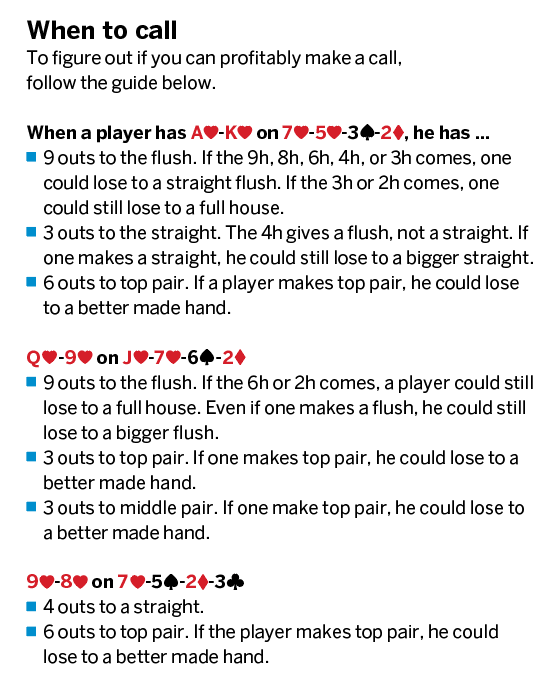
Some players enjoy figuring out how many outs they have against an opponent’s specific hand. But one never knows what an opponent has, so that exercise isn’t too useful.
“Counting on improvements,” below, shows how often a draw will improve on the turn, river or the turn and river combined.
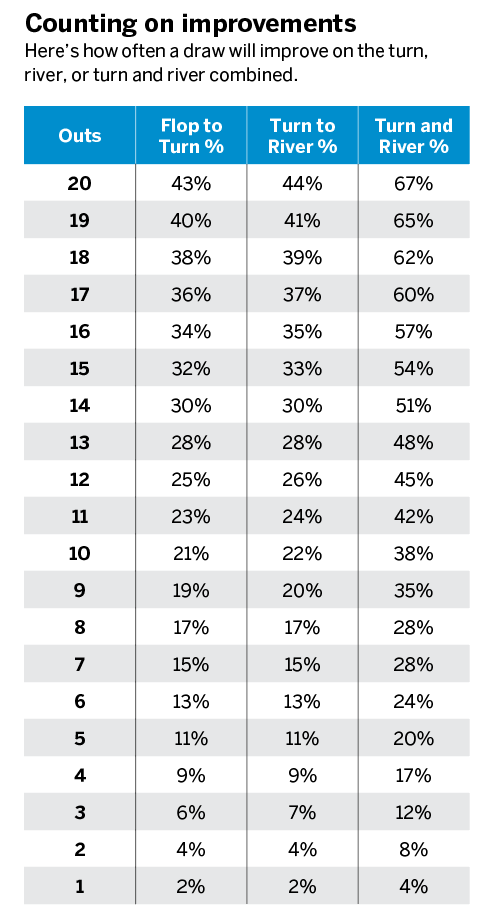
Jonathan Little, a professional poker player and WPT Player of the Year, has amassed more than $7 million in live tournament winnings, written 14 best-selling books and teaches at pokercoaching.com. @jonathanlittle

